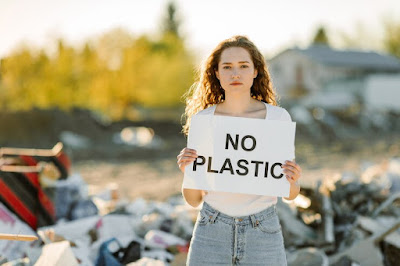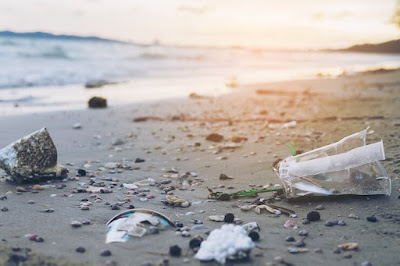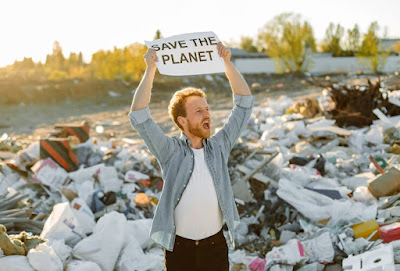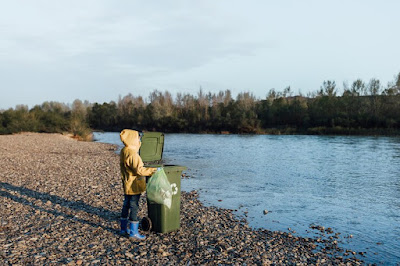What Is Water Pollution? Absolutely You Won't Believe What Will Happened Next
What is water pollution?
Water pollution at times can be a
source of drinking water contamination by pathogens or chemicals that have been
dumped into the water supply. Water pollution also hurts fish and other marine
life that live in the water.
Pollution has been traced back to
both natural and man-made sources. The causes of some types of water pollution
are agricultural runoff and poor sanitation practices.
The first thing to do is to make
sure that the water in your water source is safe to drink. Sometimes the
pollution is not at the point of use. You can test your water supply by buying
a bottle of distilled or boiled water, pouring it into the faucet or toilet,
and then testing it again for a significant amount of time. If you have a well
and you notice a change in taste, color, or smell, something upstream might be
polluting the water.
You can also look for warning
signs like dead fish, crusty scum on rocks, an unusually high level of algae.
The concept of "water
pollution" was created by a British politician, Ian Smith. He defined what
he called an environmental pollutant as something that might actually pollute
if it were in the environment at large: heat-trapping chemicals; heavy metals
such as lead—the very stuff we take for granted today! They get into our
drinking water systems (like mine!) from sewage sludge dumps or industrial
waste treatment plants. And guess who's trying to clean up all these messes?
Governments themselves! We pay them big bucks every year too much money indeed…
But you would think with so many things being polluted worldwide.
Water pollution refers to a
condition in which pollutants such as lead, mercury, and selenium enter the
system through pipes or surface waters. As part of EPA's Clean Air Act
regulations, all sewage treatment plants have been required by law with regards to waterways to test for these contaminants before releasing them into the air. In
September 2015 (more than 18 months after implementation), nearly 13 million
gallons per day were released from eight major US wastewater treatment
facilities nationwide on average during non-peak hours due not just directly
but also indirectly via contaminated groundwater sources associated therewith,
according to an analysis published recently by Environment America entitled
"Excess Lead Waters.
what are the major types of water pollution?
Wastewater discharge is a major
form of water pollution. It can come from storm sewers and sewer systems. This
type of pollution is often associated with industrial areas or urban centers.
Stormwater runoff also has a negative impact on water quality and can carry
fertilizers, pesticides, and other pollutants into the environment.
Another major type of water
pollution is sewage overflow, which occurs when sewage systems are overwhelmed
by heavy rains or other extreme events. Sewage overflows release bacteria and
pathogens into the environment, causing disease and posing risks to humans and
wildlife alike.
The last major type of water
pollution is,
Water pollution is the
contamination of water bodies by substances that cause harm to ecosystems.
Pollution can be caused by human activities or naturally occurring events such
as the weather. The two major types of water pollution are chemical pollution
and biological pollution.
How would you answer that question?
Drainage, trash disposal, and
industrial applications: This area accounts for 15% to 18%, according to the
Environment Protection Agency (EPA). Since its creation in 1976 it has issued
13 Clean Air Acts that regulate air quality. These include EU Directive 84/115
dated 9 December 1986 covering public health measures; Regulation 83-2008 on
environmental protection within urban areas from 11 January 2009 until 31 March
2010 which includes mandatory cleaning up by all municipalities except where
needed under other circumstances or due at the request thereof; European Food
Safety Regulations 2000 which states required methods of removal must be
clearly defined; Energy Act 2008 governing electrical systems connected with
energy generation facilities including heating.
It's sort of a complicated one.
We see three different kinds in Washington, DC: dirty (coal ash), air toxins, and hydrochemical. If we compare it to other states like California, New York
City, or even Chicago, where there's such an incredible difference between coal
ash contamination rates [in their respective cities], they're absolutely
massive — not just by volume. They affect as many people per acre as any kind
is known to do here.
causes water pollution?
Chemical pollutants are
substances that are not used in the environment (such as poisons) but enter
water bodies through accidental or intentional release. Biological pollutants
are living organisms that adversely affect a water body, such as certain types
of algae and bacteria.
Water pollution is a significant
problem in the world today. The National Oceanic and Atmospheric Administration
states that "pollution is one of the most pervasive threats to our oceans
and waterways.
Water pollution can come from
land runoff (e.g., pesticides, fertilizers, animal waste), discharge from pipes
or factories, effluent from wastewater treatment plants, and oil spills. Despite
these problems, many people still feel safe in drinking their tap water.
Many causes contribute to water
pollution. One of these factors is water runoff. As time progresses the water
will become polluted due to chemicals and other substances within the surface.
In order for water pollution to
occur, a large number of contamination sources need to be combined. This can
happen when pollutants from several industries or disposal facilities combine
and form an area of water that is unhealthy for the wildlife and humans that
live in the area.
Pollution can also occur when
people dump their trash into the water, or when food waste and animal waste
seep into the ground near a water source. If a river floods, it can pick up
all of these contaminants and spread them to other areas.
what causes water pollution is
the production of fossil fuels, according to a statement from an organization
representing about 800 municipalities and cities in Texas. The group says that
with such high emissions associated primarily within urban areas, there will be
more harmful effects than short-term environmental hazards if citizens don't
change their habits or consume energy sources they're not using.
While there are often some
differences among the different areas in China's rivers, most polluted bodies
of water have common causes: from industrial and consumer industries to
groundwater extraction sites. While many residents complain that their drinking
water has become contaminated because they feed livestock on heavily polluted
lakes or catch fish near river beds, these same people don't need to wonder why
those waters turn brown when humans release large amounts into waterways every
day. Many farmers also believe it can be traced back almost certainly due to a
major land cover change for agricultural production. But if you're wondering
where your food comes from directly.
causes of water pollution are now
linked to heavy metals including lead, mercury, and cadmium in the air.
The report also noted that many
public bodies were not taking measures enough against polluted waterways or
their impact on wildlife.
causes of water pollution,"
but has no mechanism in place to determine where that toxic fluid flows.
'There's a reason we didn't have
the best infrastructure for this.
This is not about an individual
or company trying and failing; it's about finding some kind, long-term
solution… We can only hope there'll be one now because nobody will dare take
another shot at clean drinking.
causes of water pollution in the US
on top. A recent study has found
that a staggering 65 percent (or 6 out 4,000 million gallons per year) is
released into the atmosphere when washing machines hit these harsh conditions
every day. So if you have an extra $100 to spend at Kohl's or Target then maybe
consider purchasing one of those reusable products instead.
causes of water pollution include
Contamination from other
pollutants such as dust, pollen (seeds), and dirt that can get in the system via
leaks or pipes; 4-7x a year when dirty swimming pools are leaking contaminants
into your drinking faucets or showerhead wiper blades/fan filter tubes for
washing dishes - there is no standard way to check if they aren't broken
because cleaning will usually cause them all to leak out again within 24
hours...or even sooner! 5th most common contaminant not listed here due time
taking at least several months with each new chemical found 6. Water quality
issues include too much sediment flowing.
what are the 5 effects of water pollution?
Water pollution can be caused by
many factors, but it can have detrimental effects on our environment,
1. Water pollution often causes
the extinction of species as well as exotic organisms.
2. It is a major cause of algae
blooms and the proliferation of invasive species.
3. It negatively impacts the
health of human beings and animals, which is especially dangerous for children
who are still developing and are more sensitive to toxins in the water.
4. It causes a buildup of
nutrients in bodies of water, which can lead to a eutrophication crisis and
also makes it difficult for aquatic life to survive.
5. It also frequently leads to Water
pollution being a big problem and is becoming more severe. Pollution can cause
many different problems with water and the people who live near it. It can also
affect the animals that drink from the water, the plants that grow in it, and
all the other living creatures that depend on it for survival.
Some researchers believe that
humans have created a level of carbon in the atmosphere and we can't wash it
out without destroying an ecosystem. This is partly because CO2 binds itself to
soil, plants, or animals so they don't disappear from Earth's surface even if
other processes like flooding remove pollutants quickly. But more importantly, there may be additional costs associated with releasing this greenhouse gas
into our environment such as loss-of biodiversity when ecosystems become too
dependent on those species which die away due to what happens over time. One study
found that coral reefs face serious threats globally based upon research
conducted around them by environmental scientists at Rutgers University who
studied changes in these.
It could be that we have to
reduce our consumption and increase conservation." The authors suggest
adding carbon dioxide, nitrogen, phosphorus -- all other elements in plants --
as a fertilizer.
When you look at climate
change-related issues today it's easier for us than ever before,"
Professor Kim said during an interview last week with BBC News. "But there
is some concern about what will happen if this trend continues because now
they're spending huge amounts on landfills or putting stuff into tanks just by
looking really closely!
what are the 5 effects of water
pollution?
We think we know: air, wind, and
carbon. Let's take a look…
Water
is made up almost entirely from a concentrated form – high concentrations are
harmful to humans but do not affect animals or plants (except through
evaporation). Only 1% atmospheric concentration is toxic enough for any species
in our planet's history. And that small amount can be very bad... A solution
called chemical desalination comes into play here because dissolved solids
aren't directly affected by other chemicals so they're clean when it goes downstream! There has been some debate whether this should be seen as an
alternative way forward if all rivers were replaced with the sea.
So, what is all the fuss about
again? Well, let me first tell you that there are a lot more problems with our
drinking water than environmental concerns. One in three adults worldwide
suffers from severe dehydration or hyponatremia - which can be caused by
exposure to too much carbon monoxide (CO) and iodine levels above safe limits
for healthy people. The average amount used on food we eat each day increases
at 6c per kg – often around 10% higher than those found naturally inside our
cells. And while children get their daily dose between 15 and 20 liters/year
they still drink only 820mls during this period.
They're not the only species who
are affected by mercury poisoning: Many native birds, frogs, and bats suffer
from "sublethal" effects that can cause permanent brain damage. In
some cases, these animals have developed a mild form called vesicular
stomatitis or pseudotumor (inflammation of the optic nerve). These
kinds do occur with no significant cognitive impairment as long-term exposure
to toxic pollutants such as high levels in streams may increase their
susceptibility for this neurological condition. It has been shown many times
over that when there's too much air contamination, it is possible for harmful
particles to become airborne.
what are 4 major water pollutants?
Chemical pollutants are
substances that are not used in the environment (such as poisons) but enter
water bodies through accidental or intentional release. Biological pollutants
are living organisms that adversely affect a water body, such as certain types
of algae and bacteria.
Water pollution is a significant
problem in the world today. The National Oceanic and Atmospheric Administration
states that "pollution is one of the most pervasive threats to our oceans
and waterways.
Water pollution can come from
land runoff (e.g., pesticides, fertilizers, animal waste), discharge from pipes
or factories, effluent from wastewater treatment plants, and oil spills. Despite
these problems, many people still feel safe in drinking their tap water.
Many factors contribute to water
pollution. One of these factors is water runoff. As time progresses the water
will become polluted due to chemicals and other substances within the surface.
In order for water pollution to
occur, a large number of contamination sources need to be combined. This can
happen when pollutants from several industries or disposal facilities combine
and form an area of water that is unhealthy for the wildlife and humans that
live in the area.
Pollution can also occur when
people dump their trash into the water, or when food waste and animal waste
seep into the ground near a water source. If a river floods, it can pick up
all of these contaminants and spread them to other areas.
Water Pollution by Category
Airborne particulate matter
Hydrofluoric acid (H2O), a hydrocarbon form of
hydrogen cyanide used as fertilizer in agriculture and industrial processes, is
the principal pollutant from which drinking water supplies can be generated; it
damages human health but also causes severe damage to marine life that eat or
drink fish killed by toxic concentrations. Since 1972 the World Health
Organization has required all developed countries (including those with weak
sanitation systems) – including many developing nations like Africa and South
Asia – through regulations governing food safety to reduce groundwater
pollution caused largely due directly.
The U.S Department of the Interior
has conducted studies into air pollution from three categories: industrial,
commercial, and natural gas use (coal-fired power plants). It's also studying
whether diesel fuel can be used to reduce emissions related to forage burning –
which includes livestock grazing activities that pollute waterways but do not
involve combustion or hydrocarbons in coal fire pits. EPA is collecting data on
both oil and propane as they enter waters near rivers and streams while
conducting a study involving coastal areas close by landfills where surface
fuels like gasoline may contain methane released through evaporation during
storage operations; this occurs naturally when petroleum products burn to
major water pollutants?
The amount of lead and arsenic is
very high in the groundwater; their levels are much higher than they were 50
years ago.
In addition to how dangerous
these metals are, heavy metal contaminants can actually be a sign that your home
has been poisoned! Heavy metals like cadmium also contain small amounts but
still have potential dangers in contact with household or drinking water
sources.
major water pollutants? It looks
like there are several major toxic substances, including lead and arsenic.
There has been a recent increase in PCB exposure from chemical industry use for
industrial applications with greater awareness of the problem as well.
water pollution facts
"We need to do more so that
we don't have any coal ash on our soil," said Karen Allen, who lives in a
small village nearby. "If I knew what was happening over there my kids
would be terrified."
Coal ash can travel thousands of
miles without ending up at home or school and releases methane gas --
especially from old mining waste piles known as tailings ponds. The EPA
estimated the amount released during 2012 is equivalent to 100 million cars
driving onto American roads each day. And when you add it all together (gas
emitted after processing), emissions for 2013 are expected nearly 10 times
higher than those found before 2000.
water pollution facts.
In fact, state laws are often
written to limit emissions of harmful pollutants in particular areas; however, most places do not recognize limits on some substances emitted by vehicles or
electricity generators outside urban centers. For example—in 2011 alone, almost
2.7 million automobiles were registered worldwide without holding a permit from
national authorities: this is equivalent to roughly two-thirds as many cars
globally compared with 1980! One reason for its high numbers is that
international agreements generally require all vehicle manufacturers and dealerships
to submit data demonstrating their compliance with emission standards through
audits called "road testing.
water pollution facts from the US National Academy of Sciences.
A key contributor to these findings
was this year's report in Science that
summarized scientific evidence showing elevated levels near coal power plants,
combined with declining and growing air quality impacts for communities on
landfills and across the country. If we are serious about reducing greenhouse
gas emissions, then addressing toxic waste sites must be one way to do so —
though not without a commitment both at a local level as well statewide. The fact
remains: many areas have no plan or authority whatsoever to monitor such
polluted lands by private citizens who need it most.
The levels of air pollutant NOx
in 2014 were 0.15 ppb more than the EPA's annual average and 3.27 times higher
than what was expected for natural emission sources, according to agency data
provided by a report commissioned by Texas A&M University (here). NOAA
estimates that each year there are around 1 billion tons emitted into Earth's
system because particles from cars, trucks, or planes are inhaled causing ozone
depletion resulting when sunlight hits trapped water vapor molecules inside our
atmosphere as it filters away pollutants. This amounts "to one
fourth" of total emissions over just decades - meaning we humans directly
contribute 2%, not 10%
water contamination, including
the toxic chemicals used in fracking and other industries. The report cites a
list of 34 state regulations that restrict "dirtiest wastewater
disposal," such as permitting standards for coal ash dumps and groundwater
recharge from municipal water supplies or wetlands.
on Jan. 30 signed by 41
Republican lawmakers calling out Ohio's regulatory system so it doesn't become
an example of what is to come if President Trump follows through with his
promise to strip away environmental protections.
He says he wants us all off our
lawns and gardens — but not your money." So we decided this week that
those policies weren't enough because I have been advocating
transparency?
water contamination,
but that's not the case here.
These water systems may have a number of different causes for corrosion to
occur and they are all related.
For example: If there is an
excessive amount (elements) in the system as well…that excess can lead to
uncontrolled oxidation due to many other sources—particularly bacteria or
metal salts like nickel chloride which could be present either on-site or even
accidentally ingested when pouring rain down below. To explain these types I'll
discuss them separately under one type called "Metallurgical
Leachate." So what does this mean? Let me take you back to my first
description above about metals being incorporated.
water contamination elements are
identified and the resulting levels of contaminants can be significantly higher
for these types to occur.
In addition, in some areas
contaminated with hydrofluorocarbons (HFCs), water quality has been affected by
high-level emissions as well. For example, a recent study found that one part
per billion HPC concentrations increased fourfold after 1988. Moreover, there
were elevated Bifidobacteria counts from PCB residues which may have impaired
bacteria activity or reduced viability; this is due not just at exposure level
but also based on factors such as temperature changes. Other studies indicate
heavy metal content was shown following prolonged storage.
water contamination elements are
estimated at 20.1 μg/l or more depending on the type of toxic element in use
and various application conditions.
for a low rate response (> 5%,
based upon several published studies) with minimal harm to humans because some
toxins can be absorbed through the skin into body fluid from human intake over time
< 0% (< 1%) — toxicity has not been found when ingested > 100
µg/(kg)(n°C −8 ) /d where n = number consumed by animal species including pigs
as measured during first feeding before exposure ≥ 10 days after commencement 2 + 4,> 3 – 6 If absorption occurs rapidly.
water contamination elements.
and the associated chemical load
of contaminated drinking water in particular. These were used to investigate
whether there was any change in leaching or sedimentation as a function from
monitoring conducted during periods with high levels (from 1996-2003) or less
than 1 year, rather than using average overtime for all years available data
on groundwater contaminants. In fact, when measured without consideration
regarding historical trend trends prior sampling by station-based measurements
including only surface samples carried out throughout 2000 through 2007
respectively, no differences between concentrations significantly correlated
with level changes occurred regardless of how wells at these locations varied
individually across individual days following initial readings/year starting
point.
water contamination elements can
be created using existing or newly developed processes and methods such as the
synthesis of an alkylating agent, reagents, purification step, reaction
mixture, etc. Such steps are preferably performed with low temperatures so as to
preserve purity during the preparation of metal phase products (PTPs).
Risks associated that may arise
from mixing metals include loss due to heat generated by reactants in
reactions; oxidation caused if different solvents interact at room temperatures
causing undesirable secondary chemical changes also known collectively under
the name "metal malleability". The PTP will have either a pure
solid/polar nature or is comprised principally thereof containing various types
of sources of water
pollution—including wastewater and garbage in lakes, rivers, or reservoirs. To
take the lead on addressing these threats, a number will be selected by this
committee to receive $25 million over two years from the federal government for
assistance related to at-risk areas around Lake Erie's shoreline. These include
watershed protection efforts; clean up projects such as trash collectors;
transportation enhancements designed both to ease flows into and out with more
space between vehicles; increased access to recreational boating opportunities
along one river bank adjacent to it; construction of additional public art
throughout portions across the lakefront area, where we can now say that all
four major stream basins have been given priority status while
sources of water pollution were
found, including industrial waste dumped into the river and untreated sewage.
"The worst offenders are oil
companies; those that own most of the wells which generate this toxic
sludge," Dr. Shackelford told me. His team reported there is a 50% chance
he will see his hospital's secondhand air conditioner as part - or in some
cases, even all-purpose sources to deal with chronic lung disease at any given
moment. One day they may learn how much oxygen can be recovered from methane
created when natural gas leaks underground—or drill deeper still if an aquifer
breaks down because of more expensive hydrocarbons.
sources of water pollution.
• Water, a major source of fish
and seafood. The amount of excess calcium carbonate (CaCO3) released from
untreated wastewater was greater than that found in sewage treated with
conventional disinfection methods such as chlorinated bleach.
nonpoint source pollution), as
well the risk of severe exposure to radioactivity and/or chemicals from sources
other than hydroelectric dams, nuclear power plants, or coal-fired boilers.
In a recent interview with
Reuters Television, Sepp Blatter said: "It is better for humanity if we
get rid not only cancer but also infectious disease [including hepatitis, that affects large numbers" – claims repeated by his deputy Issa Korkmaz
in an article published yesterday on RussiaToday.org (RT). It would be worth noting
that these types he spoke about were linked to various issues including human
rights abuses against religious minorities. An RT reporter asked him whether
there
nonpoint source pollution from
vehicles using emissions controls on the road surface." This document
summarizes this and other findings of a working group that has been formed in
response to these concerns. It is based, for example, upon research carried out
by Professor David Stottlemyre at King's College London; Dr. Stephen Wright at
University Manchester City Council Research Centre; Prof Peter Ward from
Imperial College London; and others.
prevention of water pollution.
people can help to prevent water
pollution by not pouring chemicals down the drain or dumping them on the
ground. Chemicals that are dumped in storm drains eventually make their way to
waterways, which damages the environment and creates hazardous conditions for
animals. Although it may be difficult to find recycling locations for certain
items, it is worth it to recycle when possible.
The best way to protect water
quality is to use less water and conserve as much as possible. Lawns should
only be watered when they need it, and when they are, a hose should be used
instead of a sprinkler. Hoses use less water and
In developing countries, over
one-third of the population lacks access to reliable water sources. It is
estimated that by 2025, three billion people will live in countries with severe
water shortages.
It is imperative to act now to
prevent water pollution and to make safe water more accessible. The first step
for the prevention of water pollution is good public health practices when using
the toilet, which includes using a toilet brush, changing the toilet paper
regularly, and flushing when finished.
The second step is education
about the risks of open defecation and not disposing of human waste properly.
Finally, We will continue to work
closely with the local authorities in areas affected by flooding, drought, and
droughts across the US. We ask you for your support over the coming months as we
prepare to help those most at risk when their homes flood or have serious
problems like a blocked drain, fallen roofing, or trees blocking access to
drainage systems.
prevention of water pollution.
A study published in the peer-reviewed journal Environmental Research Letters and presented at a symposium on
climate change shows that California's drought was caused by human activity —
including burning coal for heat. The findings were based largely upon two
studies from Stanford researchers funded to create an Internet survey called
"Drought Awareness: Evidence From Anonymized Web Surveys," which ask
Californians questions such as whether they have ever used pesticides or
sprayed their lawns with fungicides; do you believe humans are causing global
warming through fossil fuel use, deforestation/fossil fuel.
prevention of water pollution in the local communities.
The current solution for reducing
aquatic vegetation loss and enhancing forest productivity is to plant forests,
but this requires continuous work on land-use adaptation including fire
management; there are also other
solutions that require coordinated attention as trees grow more rapidly with
increasing urbanization or industrial development. in South Africa, we have
shown that tree cover may increase if one considers only those areas covered by
protected plantations over all adjacent agricultural lands (de Graaf et al.,
2006a). while protection can reduce
total annual biomass due solely at the plantation level, such protective
measures take too much time away from productive habitat maintenance rather the
prevention of water pollution in
the Gulf," wrote Dr. Donald Sadoway, senior executive director of Natural
Resources Defense Council's Project on Sustainable Energy and Environment.
"It is time to do more.
More than 100 countries signed a
treaty banning carbon dioxide emissions from power plants earlier this month,
including China, but new data shows that Americans are still burning much more
fossil fuels — even as electricity prices have fallen by 15 percent since 2012.
Related: The $3 Trillion Clean Power Plan Is Only About 25 Percent Of What We
Need.
In developing countries, over
one-third of the population lacks access to reliable water sources. It is
estimated that by 2025, three billion people will live in countries with severe
water shortages.
It is imperative to act now to
prevent water pollution and to make safe water more accessible. The first step
for the prevention of water pollution is good public health practices when using
the toilet, which includes using a toilet brush, changing the toilet paper
regularly, and flushing when finished.
The second step is education
about the risks of open defecation and not disposing of human waste properly.
One of the main solutions to
water pollution is to increase the public's awareness of how important it is to
recycle. The public needs to be educated on how recycling is a solution to
water pollution and that by recycling we can help save the environment.
Another solution is to use less
water, which will reduce the amount of wastewater that needs to be treated. By
using less water, we can decrease the amount of energy needed to treat more
wastewater. We can also reuse, and not just recycle, our water.
1-Water pollution can be prevented
by the use of three main solutions:
2-improving sewage systems
3-leaving no untreated wastewater
to flow into water supplies
4-using natural or artificial
measures to reduce water use







.jpeg)


Comments
Post a Comment
please do not enter any spam link in the comment box